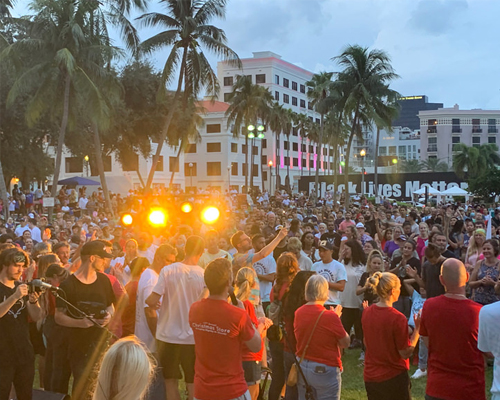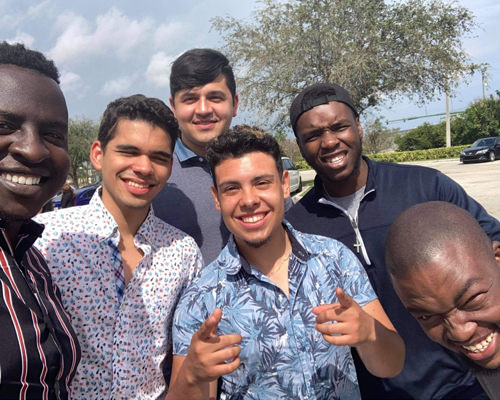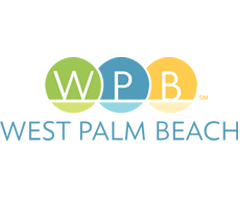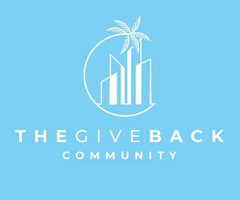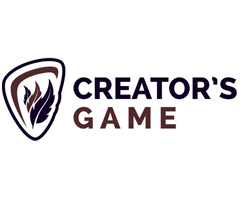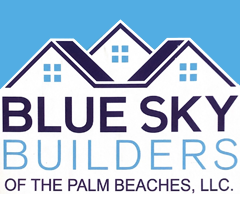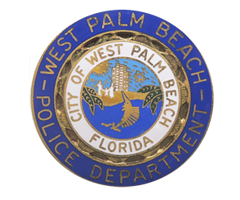Why Now?
The “Palm Beach County Initiative” brings strategic problem-solving insights and an understanding of many complexities, to help solve heretofore unsolved community development crisis'. It includes how to grow our Palm Beach County community, improve our execution and to challenge, encourage, and bring “best practice” contemporary principles to achieve success and community transformation. DOWNLOAD PRESENTATION
Work-Force Housing:
Opportunity for Home Ownership

Transformation Palm Beach County Inc., has partnered with local affordable builders to provide the opportunity to grow up in a healthy home and live in a safe community. We currently have five houses that will be completed in the winter of 2021, and January of 2022. It is our purpose and goal to adopt a block with every home built to expand our holistic programs to neighbors in our targeted local community.
Community Safety:
Developing Pro-active Strategies to Fight Crime & Blight
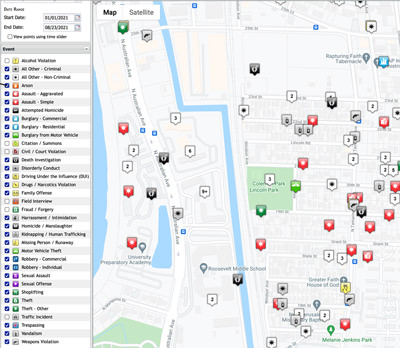
Social and economic forces beyond their control are jeopardizing families more than ever, with children being lost to living in poverty, failing schools and violent neighborhoods. The children in these communities represent a loss of human potential. They represent a future foreclosed. Through our development of heat maps, community partnerships, and technology, we are committed to making our communities safer.
Empowering Local Leaders:
Houses of Hope
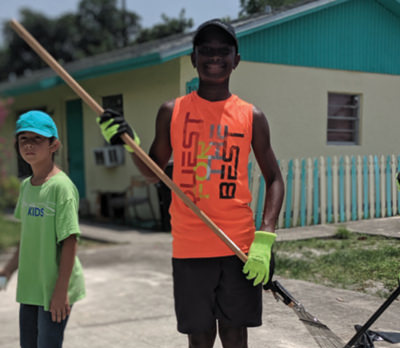
Transformation Palm Beach will assist leaders in Palm Beach Counties communities overcome obstacles by implementing our House of Hope model. These programs empower local grass roots leaders to tackle challenges in high crime/poverty areas with real, usable solutions.The mission of House of Hope is to unite neighbors and other partners (churches, religious organizations, helping agencies, etc.) to enhance the neighborhood system of caring relationships. DOWNLOAD PDF
Values-Based Compassion:
Faith-Based Outreach
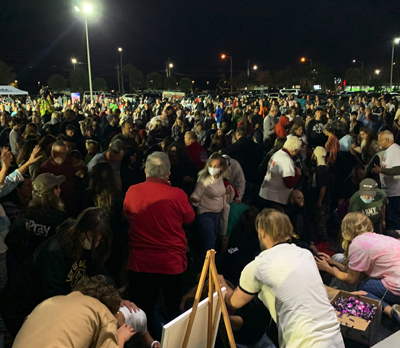
During 12 nights of outreach in the local Palm Beach County communities of West Palm Beach and Lake Worth, Florida, thousands of local citizens were reached to improve their mental and emotional health during the COVID pandemic crisis. Over 1,000 local citizens received personal encouragement. Hundreds of families received food and personal outreach as to their needs during the crisis. The meetings involved over 60 local non-profits and organizations.
Our Model
Our transformation model is a block-by-block and holistic strategy to reclaim the blighted areas of cities. Working with local nonprofits, faith-based groups, neighborhood associations, and government agencies, teams are mobilized to reach target neighborhoods in the community to produce physical, cultural, social, and economic development. It is a movement of concerned citizens birthed through faith, service, sacrifice, and commitment.
Our model for economic transformation begins with data maps which give information about each property in the target area and which properties contribute to blight or success of community development. The phases are:
Reclaiming the blighted physical properties of the community to create safe affordable housing for local residents. See Our Accomplishments.
Re-knit the community through strategic partnerships to create safe homes, safe schools, and a safe prosperous community. See Our Focus.
Re-new the hope and hearts of the communities through the provided workforce development, life skills, and mentoring and social programs. See Our Vision.
Our Strategy
-
The Discovery Phase: Research And Analysis
The first phase needed for a comprehensive transformation program is a clear picture of the targeted community. This requires research and analysis of social (crime, poverty, hunger, etc.), economic (housing, business, etc.) cultural (health of inter-faith), and physical (blight, real estate, etc.) conditions. Research and analysis give interested parties (developers, non-profits, government agencies, churches) a realistic picture of how effective organizations have been accomplishing their mission.
-
The Vision Phase: Casting Goals & Objectives
The second step of the Five Phase Model will be to host a series of Cast the Vision luncheons with leaders of influence. This includes business, political, academic, community, and religious leaders. These luncheons will present the studies in progressive stages.
-
The Strategy Phase: Partnerships
The third step of the Five Phase Model will be to work with existing local non-profits, schools, ministries, churches, and businesses to help strengthen their existing programs and fill in the gaps with programs that will sustain personal and community transformation. These leaders will be identified as local heroes or points of light for the community.
-
The Rally Phase: Community Wake-Up Call Rallies
The fourth step of the Five Phase Model will focus on Community Wake-Up Call Rallies. These will be rallies in which a month is chosen to involve the entire community. Community organizations will have already been engaged at this point with the afore mentioned programs and are launched during this month.
-
The Mobilization Phase: Community Action
The fifth phase will concentrate on partnerships to engage in follow-up training with Community Mobilizers. This includes laying a foundation over a six to twelve month time period that builds out Capacity Development Roundtables in the areas of Social (crime, poverty, hunger, etc.), Economic (housing, business, development) Physical (blight, real estate, etc.), and Cultural (impact of inter-faith community) areas and tracks the transformation process with local organizations.
- Download: Presentation
Technology Empowering Organic Local Leaders
Building A Holistic Community.
This Land Use Neighborhood Strategy (includes development of asset mapping land use plan for each Palm Beach community over the next two years) is comprehensive, organically led at the local level, empowered by marketplace servant and mission minded leaders. This project will work in partnership with local community-based organizations and leaders to rebuild their neighborhoods in the selected targeted areas.
Strategic Problem Solving
The “Palm Beach Initiative” brings strategic problem-solving insights and an understanding of many complexities, to help solve heretofore unsolved community development crisis'. It includes how to grow our community, improve our execution and to challenge, encourage, and bring “best practice” contemporary principles to achieve success and community transformation.
A COLLABORATIVE COMMUNITY
Reimagine our Palm Beach County Neighborhoods
Transformation Palm Beach County is a Strategic Roadmap and Transformation Plan for Palm Beach County for the coming decade. This involves a three-month preliminary snapshot, and two-plus-year implementation plan with a strategic framework evolving into a resource plan to identify gaps, solutions, and potential resources.
This impact project outlines, with a locally established committee and board of directors , twelve major measurable objectives and twenty-two anticipated specific outcomes to assist with the redevelopment of distressed neighborhoods in Palm Beach County. Transformational outcomes such as reduced crime, job creation, mixed affordable housing, diverse retail options, and community building are expected results.
How We Differ From Other Urban Revitalization Efforts:
The majority of Urban Revitalization efforts are small imprints, taking one or two blocks at most committed to mixed income housing, one school adopted and a senior wellness program. These programs look for one non-profit to drive their community efforts. Many of these urban revitalization efforts target Low-Income Public Housing properties and create newer models of mixed income properties. The challenges that most public housing face, are then spread into the surrounding community creating the same scenario over and over again. This is typical of most urban communities.
Our Urban Revitalization deals with a broad community approach targeting multiple neighborhoods at the same time. We use a collective impact model vs. the Quarterback model (one non-profit driving the effort). While other urban revitalization efforts deal in macro information gathering (sample information gathered from usually dated census tracts), we deal in micro information gathering down to the house and apartment level (created by the latest technology in law enforcement and the free-market).
Most urban revitalization efforts deal with solely public housing, while our model deals with public housing and the private homeowners and renters in distressed neighborhoods in the city. We train community leaders on how to own the transformation model template built with local private sector support vs. them being dependent on outside “experts” that are reliant on government programs or outside funding. Finally, we believe that the spiritual community has a key role in the sustainability of transforming blighted and high crime communities.
In our program beginning in 2003, we not only targeted the largest Public Housing community that sits in the center of West Dallas, we built out our program in the thirteen communities that make up West Dallas. These thirteen communities consisted of 5,000 homes and a population of 27,000. Our zip code is 70% Hispanic,and 28% African American. Today, we are the safest zip code in the city, and have a economic boom with over $4 Billion currently being invested. We also laid the foundation for workforce housing with the buyout of over 400 drug properties and building affordable homes, which includes a subdivision. Following our foundation, 4 new subdivisions were built of affordable housing, and now middle and upper income housing is being built with houses valued up to $1 million.
We want to address the systemic issues on micro level to not move the problems but to build teams and strategies to solve the issues causing crime, blight, hopelessness and poverty. To do that, it's going to require a collective effort from all the key partners (Business, Government, Nonprofits, Residents, Local Leaders and Funders) to work together.
Our model represents a free-enterprise system across a broad sector, rather than one small block or blocks, or just public housing that other groups focus on.
Why Palm Beach County Corporate Leaders Are Responding
Palm Beach County has always held a legendary place of making locals and visitors feel welcomed and privileged. The election of President Donald Trump has increased the focus of the world on the present potential of Palm Beach County. The maximum and exponential growth potential during this time frame is limited only by our vision and willingness to address the challenges before us.
For Palm Beach County to reach its maximum growth potential and continue with its efforts to become the preferred destination for corporate relocations & expansions and as the premiere tourist destination, it must address the distressed neighborhoods. Various neighborhoods of Palm Beach County have crime and poverty rates significantly above the national average, homeownership and business equity below national averages and inadequate affordable units for working families. The blighted, vacant and gang controlled properties are a huge challenge for economic development and new housing in these areas. The systemic issues like crime, blight, and lack of coordination between the municipalities; funders, neighborhood leaders, developers and nonprofits must be addressed. Then outcomes and policies must be developed to ensure that the overall goals of Palm Beach County are achieved, and the lives of the residents are being improved.
The “Transformation Palm Beach County Initiative” is a Strategic Roadmap and Transformation Plan for Palm Beach County for the coming decade. This involves a three-month preliminary snapshot, and two-plus-year implementation plan with a strategic framework evolving into a resource plan to identify gaps, solutions, and potential resources.
This impact project outlines, with a locally established committee and board of directors, twelve major measurable objectives and twenty-two anticipated specific outcomes to assist with the redevelopment of distressed neighborhoods in Palm Beach County. Transformational outcomes such as reduced crime, job creation, mixed affordable housing, diverse retail options, and community building are expected results.
This Land Use Neighborhood Strategy (includes development of asset mapping land use plan for each Palm Beach community over the next two years) is comprehensive, organically led at the local level, empowered by marketplace servant and mission minded leaders. This project will work in partnership with local community-based organizations and leaders to rebuild their neighborhoods in the selected targeted areas.
The “Transformation Palm Beach Initiative” brings strategic problem-solving insights and an understanding of many complexities, to help solve heretofore-unsolved community development crisis. It includes how to grow our community, improve our execution and to challenge, encourage, and bring “best practice” contemporary principles to achieve success and community transformation.
Leadership requires courage in our diverse, cultural, economic, spiritual and political landscapes. Palm Beach County is poised to be a national leader to in Reimagining the American Landscape, Restoring the American Dream, and Rethinking the American Communities.
Our Team
Our team is noted nationally for their work in the area of community transformation. Their unique approach to crime reduction, poverty eradication, affordable housing, youth and hunger programs, homeless solutions and transforming culture over a period of thirty years, is producing results.
Our “life message” of community revitalization is one that brings a collaborative approach to rethink the American community, and restore the American Dream by reimagining the American Landscape.
Randy Skinner
Founder
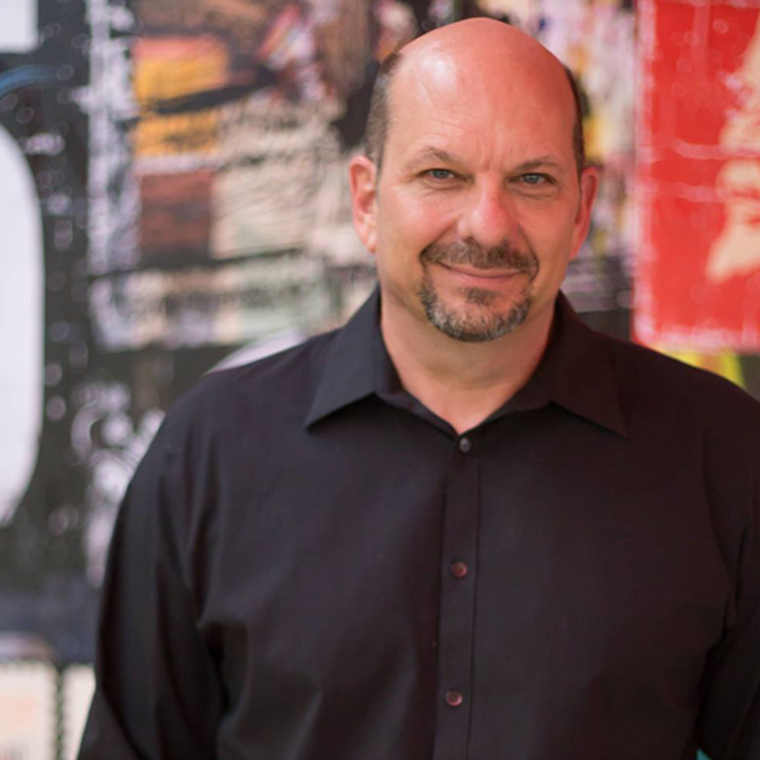
Randy Skinner is noted for his work nationally in the area of community transformation. He developed his unique approach to crime reduction, poverty eradication, affordable housing, hunger programs, and transforming culture over a period of thirty years of work as a consultant in the criminal justice community. MORE
Norman Henry
Former CEO of Builders of Hope
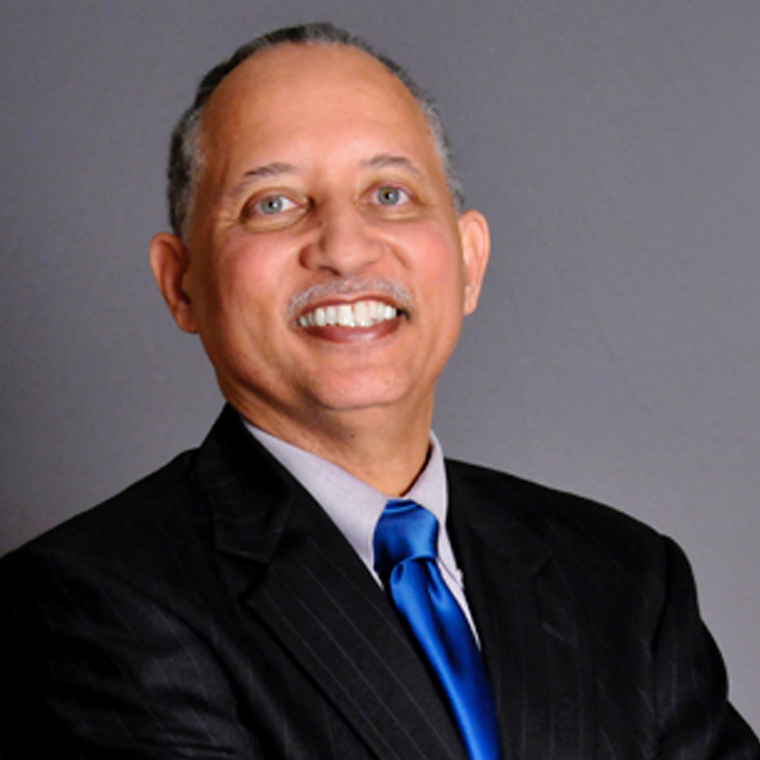
Builders of Hope is a Community Housing Development Corporation (CHDO) in the city of Dallas. Its mission is to deliver quality affordable housing to stimulate the revitalization of Dallas’ urban low-income neighborhoods into healthy and safe communities.
Melva Franklin
Strategist
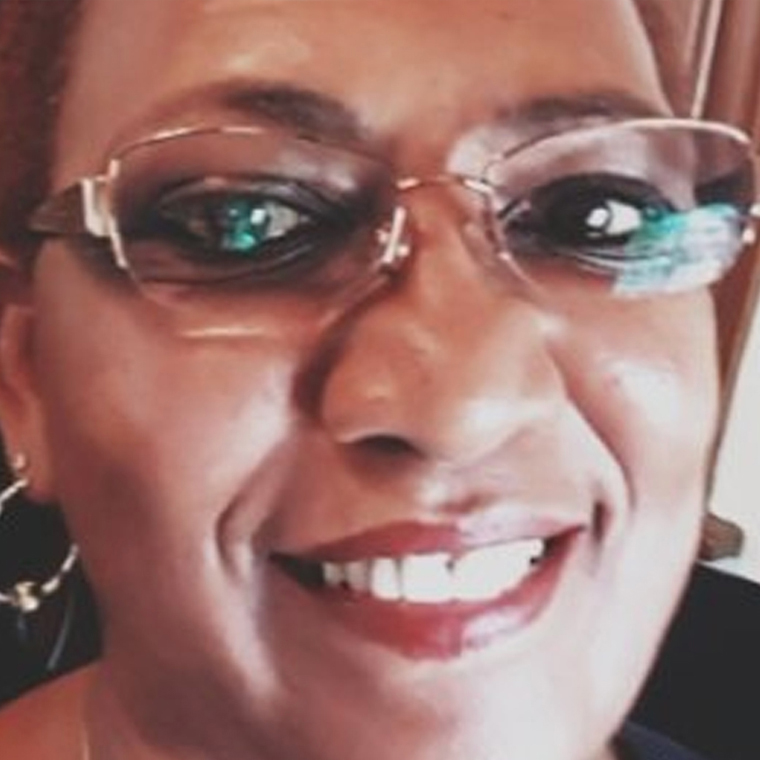
Melva Franklin has more than 25 years of professional experience in strategic planning, assessment, monitoring and outcomes evaluation of national and community-based projects and programs for the U.S. Department of Justice, State of Oklahoma, City of Dallas, Johns Hopkins University and Robert Wood Johnson Foundation.
Local Leaders
Dale Hedrick
Chairman of the Board
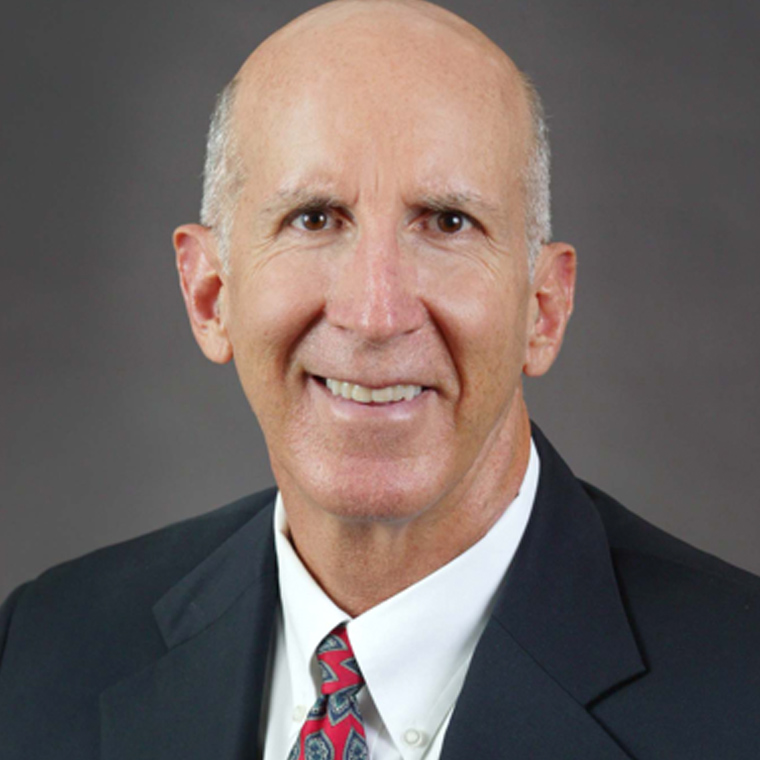
Dale R. Hedrick serves as chairman of Transformation Palm Beach County. He is the Founder & President of Hedrick Brothers Construction, a privately-owned company headquartered in West Palm Beach, Florida. A fourth generation general contractor active in Palm Beach County since 1979, Dale has been instrumental in building and maintaining the company’s reputation for providing quality craftsmanship, professional project management, and conducting business with integrity. Hedrick Brothers Construction provides pre-construction, construction management, general contracting, design-build and virtual design & construction services for Commercial, Luxury Residential, Equestrian, Industrial, Automobile Dealerships, Municipal, Country Clubs, Education, and Historic Restoration projects in Florida and Georgia. Company awards include AIA Florida Builder of the Year 2014, AIA Palm Beach Builder of the Year 2013, and Chamber of Commerce of the Palm Beaches Business of the Year 2014.
Let's Talk
Get engaged and help transform
Palm Beach County.



